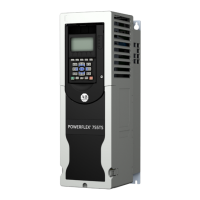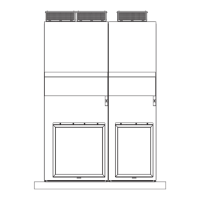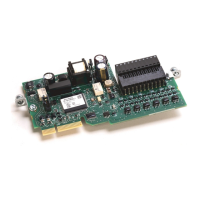Behavior models used in CIP Motion
68 Rockwell Automation Publication MOTION-RM003I-EN-P - February 2018
controller is responsible for rolling up all the conditions of the system into the
Axis State that is presented to you.
Since faults are latched conditions, a Fault Reset is required to clear the faults and,
assuming the original fault condition has been removed, the axis transitions to the
Axis State of motion device. There are many different sources of Faults: CIP
Initialization Faults, CIP Axis Faults, Motion Faults, Module Faults, Group
Faults, Safety Faults, and Configuration Faults. The following table describes the
sources of these faults:
Fault Source
CIP Initialization Faults
These faults can only occur during the Initializing state. You cannot generate an
Initialization fault in any other state of the drive, for example, faults occurring during
operation of the drive after transitioning out of the Initializing state. Initialization
Faults can apply to a specific axis or to the entire drive, in which case all device axis
instances would indicate the Initialization Fault. The device power structure, if
applicable, is disabled when there is a CIP Initialization Fault present.
CIP Axis Faults
As the name implies, CIP Axis Faults apply to a specific device axis instances. CIP Axis
Faults are the direct result of Axis Exceptions that are configured to generate a Fault
response. These exception conditions may apply to individual axis instances or to all
axis instances. In any case, applications may require the device be configured to handle
these exceptions differently for different axes. Run time conditions related to Motor,
Inverter, Converter, Bus Regulator, and Feedback components, in general, shall be
handled as Axis Exceptions. The power structure if applicable, may or may not be
disabled when there is a CIP Axis Fault present depending on the specific stopping
action applied by the device in response to the fault condition.
Axis Safety Faults
Axis Safety Faults also apply to specific axis instances. Safety Faults are reported by the
embedded Safety Core of the device that is responsible for monitoring the condition of
various critical safety functions associated with the axis. This embedded Safety Core has
a CIP Safety connection to an external Safety Controller. When an Axis Safety Fault
occurs, the safety system is responsible for forcing the axis into a Safe State.
Guard Faults
These faults also apply to a specific axis instance. Guard Faults are generated by a fault
condition detected in the drive's "Hardwired" safety monitor functionality (SMSC). This
component of the drive is designed to monitor various critical safety functions of the
drive and put the axis in a safe state if any monitored condition fails to operate
nominally.
Motion Faults
These faults are generally associated with fault conditions generated by the motion
planner function. These faults can include conditions related to the input (for example,
actual position) and output (command position) signals to the motion planner. The
device power structure, if applicable, may or may not be disabled when there is a
Motion Fault present depending on the specific stopping action applied by the system
in response to the fault condition.
Module Faults
These faults apply to the entire motion device and affect all axes associated with that
device. These faults can occur at any time during device operation. Module Faults
include all Node Faults reported by the device, which are primarily communication
faults, but can include general hardware faults where these fault conditions are
checked during run-time. A CPU watchdog fault would be an example of a hardware
CIP Node Fault. Module Faults also include communication fault conditions detected on
the controller side of the motion connection. An example of a controller side Module
Fault would be the Control Sync Fault. The device power structure, if applicable, is
disabled when there is a Module Fault present with the controller initiating the
equivalent of a shutdown fault action.

